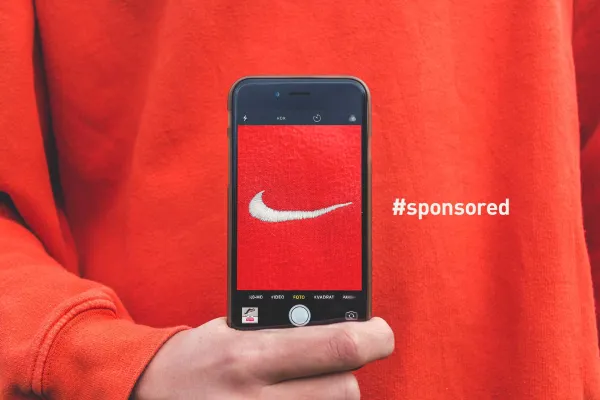
 Details
Details
So, you’ve got successful content on your site. All you need now is a winning native ad campaign and you’ll be golden. Setting performance goals is key, obviously, but that’s the easy part. Right?
Guess again. It’s not enough to simply have goals — you’ve got to set the right goals to ensure that your native ad campaigns are built on a foundation that will support long-term growth and success.
Five common mistakes when it comes to goal-setting for native campaigns:
- Setting goals that don’t reflect the channel’s true strength
- Setting benchmarks that are drawn from bottom-funnel channels and tactics
- Failing to recognise the difference between customer prospecting and re-messaging
- Wanting to test and learn while simultaneously seeking fully optimised CPA goals
- Using CTRs, Bounce Rate, and Time on Page as the sole KPIs
All marketers ultimately want to drive profitable sales. The challenge, of course, is how to do it.
1. Setting goals that don’t reflect the channel’s true strength
Native advertising is most successful when used to fill the top of the funnel and then re-engage visitors with content that removes buying friction.
Since native is a naturally strong prospecting channel, consider using Key Performance Indicators (KPIs) that capture its true contribution.
→ READ MORE: 5 Classic Misconceptions About Native Advertising
In addition to cost per acquisition (CPA) targets, try adding first-time visitor ratios, active content engagement times, new-to-file customer ratios, and average order values.
2. Setting benchmarks that are drawn from bottom-funnel channels and tactics
For benchmarks, compare similar channels and campaigns. Be thoughtful when setting new CPA thresholds, and align them with your planned campaign strategy.
→ READ MORE: How to take your native ad strategy full-funnel
In tight ROI situations, lead with retargeting and add prospecting campaigns later. Avoid adopting CPA targets from demand capture channels like paid search, affiliate and retargeting campaigns without special considerations.
3. Failing to recognize the difference between customer prospecting and re-messaging
Prospecting and retargeting are not the same things. Knowing the difference is essential to crafting realistic CPA goals for new campaigns.
Retargeting, in general, delivers much lower CPAs since, when done effectively, you are re-messaging audiences later in their purchase consideration process.
→ READ MORE: How to Reinforce Consistency for a Successful Content Strategy
New prospects bring higher CPAs in the near term — coming in at the top or middle of the purchase funnel, they’ll take longer to convert — but will boost your conversions later on.
Bottom line: A blended, higher CPA target that takes into account your larger media mix, as well as prospecting and retargeting line items, may prove more fruitful.
4. Wanting to test and learn while simultaneously seeking fully optimized CPA goals
We encounter a lot of media buyers wanting to test new campaigns and landing pages, while also wanting to achieve fully optimized CPA goals at the same time. That’s tough. Learning is a goal unto itself — one that can deliver a major payoff.
Experiment. That’s a great way to discover which message most resonates with users at different stages of their decision journey, and which purchase paths convert prospects at the highest rate.
→ READ MORE: "A/B testing Is the biggest missed opportunity for marketers"
With those learnings, ad spend goes way up — and so will your sales.
Learning and learned campaigns are a great approach. A learned campaign is developed based on data-driven insights and analysis from previous campaigns and has been optimised and fine-tuned to achieve the best possible results. A learning campaign, on the other hand, is designed to gather data and insights as it runs with the goal of using that data to optimise the campaign over time.
Evaluate the larger performance opportunity with a channel or vendor based on your learned campaigns, and avoid the temptation to have the learned campaigns pay for the learning during the same test period.
5. Using CTRs, Bounce Rate, and Time on Page as the sole KPIs
We see many buyers use misleading KPIs, like focusing too much on click-through rates (CTRs) rather than prioritizing the actions they want prospects to take, like reading content or becoming a customer. High CTRs suggest that you have attracted audience attention, but have you reached genuinely-interested buyers?
Not necessarily.
High CTRs can just as easily signal fat-fingered mobile clicks, manipulative publisher-user experiences, and algorithms designed for maximizing cost per click (CPC). To know the difference, look beyond the click toward content engagement times and resulting conversions.
Other important indicators of success are time on page and bounce rates, the latter reflecting the number of visitors that viewed only the original landing page, versus those who viewed more than one page in the same session.
→ READ MORE: Why you should measure top-of-funnel content by engagement
The purpose of a campaign, its content and message, and landing page layouts should all be top of mind when considering bounce rates.
Can you move new site visitors through your purchase funnel in more than one step? What about closing previous visitors who have yet to purchase? High bounce rates on an informative article that raises awareness and creates a purchase trigger are not a bad thing — but now you must re-engage and continue the conversation.
Hard-pressed for lower bounce rates? Consider the calls to action on your landing pages. Give visitors a reason to view more content. Also, think about how you are applying your benchmarks on bounce rates and be sure to use similar campaigns and landing pages.
Content marketing and native advertising have the power to deliver a better user experience and convert more prospects into customers. Being smart and strategic when you set expectations and goals alike ensures your content and native ad campaigns have a future — when there’s no telling how much native advertising could drive growth in your business.
This article was originally published on Storygize.com and is reposted here with permission.



